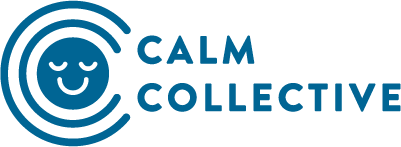Unpacking common misconceptions about D&I
At its core, D&I encompasses the collective efforts of an organisation to create a more welcoming environment for its employees. While the definition of D&I may seem simple, it can often be misconstrued as an exclusive movement for ethnic minorities and the LGBTQ community. Additionally, D&I has historically been viewed as a ‘vanity project’ within an organisation without tangible returns on investment.
During our talk, ‘How does D&I support wellbeing at work’, our panellists, Andee Chua (Culture and Employee Experience, HubSpot), Charu Srivastava (Chair of Equality, Diversity and Inclusion Committee at PRCA APAC) and Sakshi Kumar (VP D&I APAC, Credit Suisse) provided the audience with a holistic view of D&I and unpacked some common misconceptions.
Here’s a roundup of the important lessons based on the discussion:
1. D&I is for everyone
More often than not, D&I efforts can feel alienating and overwhelming to the “majority”. Charu reiterated early on in the talk, however, that a key tenet of D&I is its inclusivity. Charu highlighted how D&I, at its core, is about who you are in your truest form - enabling your success purely based on your merits, skill sets and potential instead of your background. She acknowledged that men can often feel left out of D&I initiatives, and highlighted the need for comprehensively inclusive efforts to ensure that everyone feels welcomed in these efforts.
These sentiments were shared by Andee, who provided a creative analogy of D&I work. Andee broke down Diversity as ‘being invited to the party’, Inclusion as ‘being asked to dance’ and Belonging as ‘feeling free to dance in your own way’ when sharing how he talks about his work to people who aren’t familiar with D&I.
Additionally, Sakshi highlighted that the inclusivity of D&I is unique to various organisational fabrics. She stressed the importance of not being prescriptive in D&I efforts but instead understanding your organisation’s business, people, culture and pain points to implement a tailor-made D&I initiative.
2.D&I is good for business
A common criticism levied against D&i efforts is its lack of ‘tangible outcomes’. It is often viewed as a vanity project without positive outcomes for the business. Sakshi dispelled this by highlighting how D&I has been shown to change an organisation’s operations, outreach and ethos.
Sakshi outlined the business case for D&I, highlighting the wealth transfer to a consumer base that is more diverse than ever before. She also stressed the importance of value alignment and overtly displaying these shared values to fuel customer acquisition and retention. She also highlighted the importance of D&I from an operational standpoint, citing how D&I can pave the way for honest conversations that enable employees to address their pain points openly and solve any ‘invisible conditions’ that hinder them from thriving in the workplace.
These views were echoed by Charu, who shared more about her work in advertising and marketing. She highlighted how the presence of a robust D&I infrastructure within an organisation better prepares companies to avert marketing blunders by ensuring that there are opposing voices in the room.
3.D&I is an organisation-wide effort
Similar to mental health initiatives, D&I is often misconstrued as the responsibility of leaders and champions within the organisation. Our panellists dispelled this notion, highlighting the importance of unified efforts to ensure the success of D&I within the organisation.
In particular, Sakshi highlighted the importance of leaders setting the tone for change, particularly in an Asian context. She shared how she had hosted a session with her team in Japan and how the leader encouraged employees to turn their cameras. This resulted in all the attendees for the session doing so. Sakshi used this example to illustrate the importance of leaders initiating action in an Asian hierarchy.
This point was reiterated by Charu, who shared her personal experience with burnout during the pandemic and her realisation that failing to display her vulnerability discouraged her team from seeking help. She shared how this experience shaped her views on vulnerability and the importance of setting the tone from the top.
Sakshi also talked about the importance of employee resource groups in fostering change within the organisation amongst employees. This was also echoed by Andee, who works closely with employee resource groups in his role in HubSpot. Andee shared how working with ERGs to promote difficult conversations around topics such as pride, privilege, LGBTQ rights and multiculturalism has contributed immensely to HubSpot’s D&I-centric culture.Their views illustrate the importance of bridging initiatives for leaders, champions and employees together whilst also providing personalised efforts to ensure organisation-wide success.
For non-minorities, D&I may seem like a daunting initiative that they’re not able to be a part of. From this talk, however, we’re reminded that D&I efforts need to be comprehensive in scope to fulfil diversity and also encourage participation at an organisation-wide level to fulfil inclusivity. As organisations scale up and operations become increasingly complex with the demand for holistic well-being initiatives, it's important to remember the core purposes of initiatives to fuel sustained success.
